| |
|
|
|
| |
 |
Bridge:
This is the area that houses and support for both periscopes and both
the SD and SJ radar masts. Also seen are the lookout platforms, RD
Loop and VHF antenna and the search light. On the forward part of
the bridge was one of the two TBT and the hatch to the conning tower.
|
|
|
| |
|
|
| |
| Periscopes
(right):
The after scope is the
attack scope and features an optical range finder for determining the
range of a target. The forward scope is the general observation scope.
| SJ Radar (below):
Unlike the SD unit,
the SJ was a directional radar, which could be used to sweep the
surrounding sea for targets. The primary limitation on range was the
height of the retractable mast, radar being limited to line-of-sight.
The fleet boats' SJ radar was designed for search, ranging, and
navigation. In addition to
conducting surface searches, the radar masts could also be extending above
the water before surfacing, to check the area for enemy warships and
aircraft.
|
|
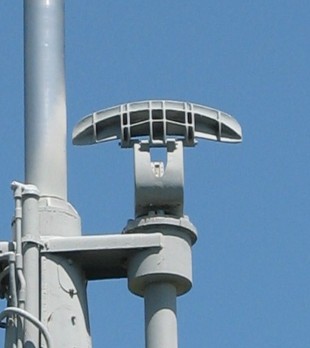 |
|
 |
|
|
| |
|
|
| |
|
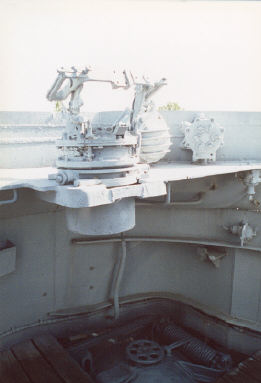 |
|
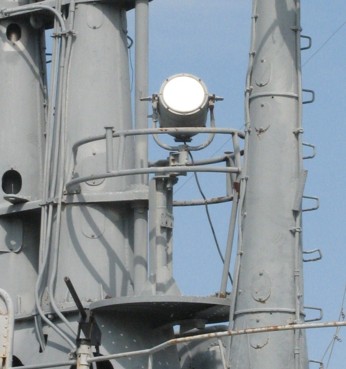 |
| |
|
|
| T.B.T. (above):
Target Bearing Transmitter.
These were used to indicate the angle, or bearing, of a target from the
submarine, and to relay that information to the torpedo data computer in
the conning tower to establish the gyro angles for the torpedo run. There
were two TBTs, one on the bridge and one mounted on a stand by the 40mm
gun on the after gun deck. The mounting for the one on the bridge
still exists. |
|
Search Light
(above):
Used mostly for communication and for
searching the surface after an attack. If the situation
would arise, a submarine would surface at night and search the
wreckage for survivors and/or material to salvage such as
papers, maps, etc. |
|
|
| |
|
|
| |
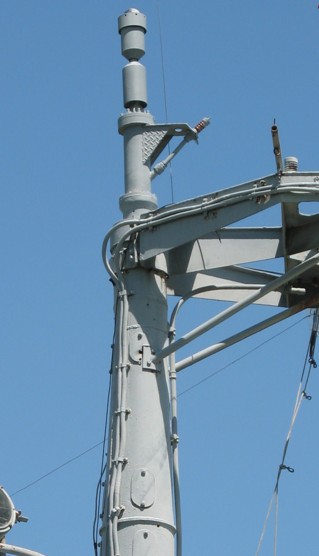 |
SD Radar
(left):
This was a very basic
unit. Operated from the conning tower, the SD radar was only vaguely
directional. It was capable of warning that a plane was within about 6
miles of the boat, but couldn't really pinpoint a bearing, or give much in
the way of information. Late in the war, SD was replaced by SV
radar. The Batfish is shown with SD Radar.
| Deck Gun (below):
Deck guns varied in location and type. They could be placed either
forward of the bridge or aft of the bridge, usually it was the
commanding officers choice as to where to mount it.
Initially, the Batfish was outfitted with a 4" gun forward. Later
in the war, the 4" gun was replaced with a 5" gun that was mounted aft
of the bridge. Currently, there are no deck guns mounted on the
Batfish.
|
|
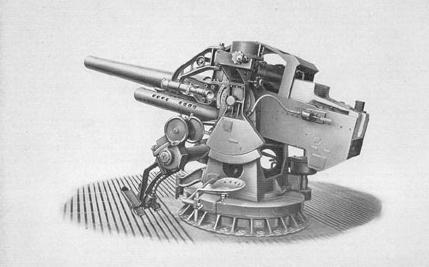 |
|
|
|
| |
|
|
| |
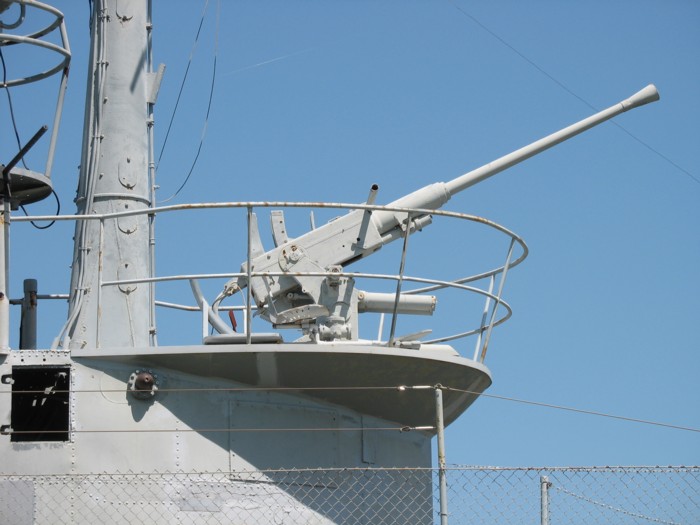 |
| 40mm Gun:
Not originally fitted to
submarines, the 40-mm was added to the arsenal when commanders argued that
they needed something to fill the gap between the 20-mm and the deck gun
for close-in attacks on small vessels.
The single-barrel "wet" version used on
submarines had seats for the aimer and trainer, who could elevate,
depress, traverse, and aim the gun with hand controls. Besides its rarely
used anti-aircraft role, the 40-mm was used for attacks on supply junks
and other light craft that weren't considered adequate targets for
torpedoes or the main gun. Later in the war, a 40-mm was usually
installed on the cigarette deck at the aft end of the conning tower, where
it replaced the original 20-mm mount. |
|
|
| |
|
|
|
|
| |
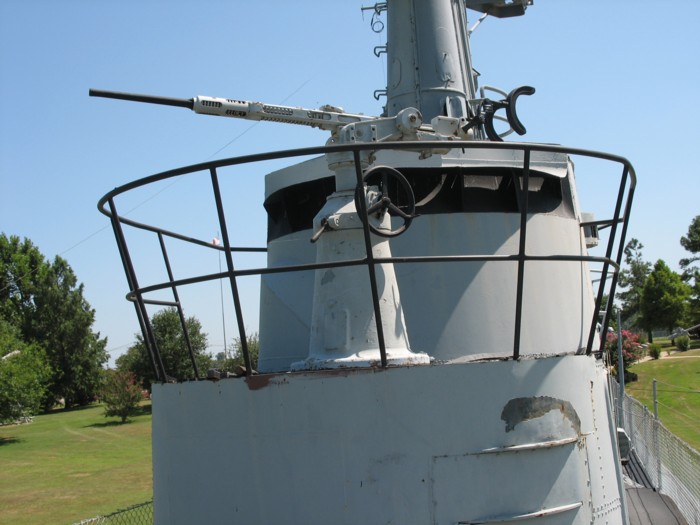 |
20mm Gun:
The smallest weapon in the American
arsenal firing an explosive shell, the 20-mm was a close-in anti-aircraft
machine-cannon. The shells were loaded in a drum magazine, and a single
gunner aimed and fired the gun. Pressure-proof storage was provided for
these guns, but it was found that they could tolerate immersion reasonable
well provided the barrels were changed frequently.
Most wartime production fleet submarines originally came fitted
with at least one 20-mm, on the after part of the conning tower and, after
the pre-war bridges were cut down, reducing the silhouette and, in the
process, creating a second gun position at the front of the bridge, a
second gun was fitted. When the skippers could convince the right people,
these were both often replaced with 40-mm mounts, giving an increase in
both range and destructive power. |
|
|
| |
|
|
|
|
| |
| Machine Guns:
Fleet submarines all
had mounting points for machineguns fitted at various locations around the
bridge. The guns and ammunition were stored in pressure-proof containers
near the mounts, where they could be quickly extracted on surfacing. The preferred weapon was the .50 caliber Browning heavy
machinegun. Currently, there is one replica machine gun mounted on
the port side of the bridge (left center of photo). |
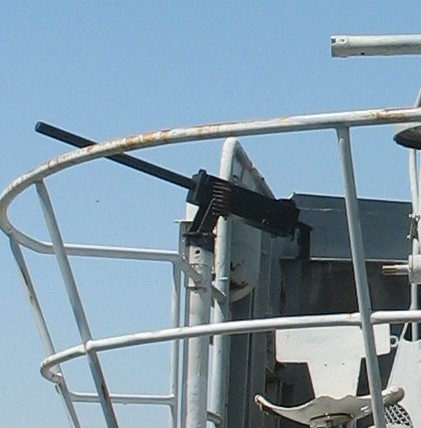 |
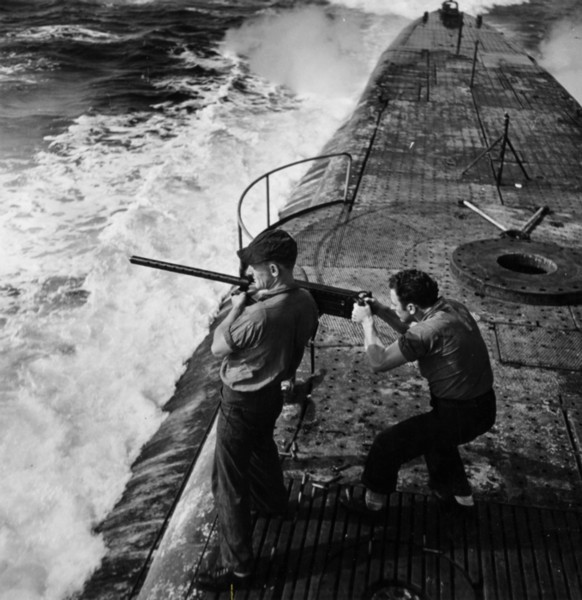 |
|
|
| |
|
|
|
|
|

